ប្រភពដើម៖ Wikipedia
The Khmer Empire, now known as Cambodia, was the powerful Khmer Hindu-Buddhist empire in Southeast Asia. The empire, which grew out of the formerKingdom of Funan and Chenla, at times ruled over and/or vassalized most of mainland Southeast Asia, parts of modern-day Laos, Thailand, and southernVietnam.[1]
Its greatest legacy is Angkor, in present-day Cambodia, which was the site of the capital city during the empire's zenith. The majestic monuments of Angkor — such as Angkor Wat and Bayon — bears testimony to the Khmer empire's immense power and wealth, impressive art and culture, architectural technique and aesthetics achievements, as well as the variety of belief systems that it patronised over time. Recently satellite imaging has revealed Angkor to be the largest pre-industrial urban center in the world.[2]
The beginning of the era of the Khmer Empire is conventionally dated to 802 AD. In this year, king Jayavarman II had himself declared chakravartin ("king of the world", or "king of kings") on Phnom Kulen. The empire ended with the fall of Angkor in the 15th century
Formation and growth[edit]
Jayavarman II — the founder of Angkor[edit]
Jayavarman II (r. 790-850) is widely regarded as a king who set the foundations of the Angkor period in Cambodian history, beginning with a grandiose consecration ritual that he conducted in 802 on the sacred Mount Mahendraparvata, now known as Phnom Kulen, to celebrate the independence of Kambuja fromJavanese dominion.[4] At that ceremony Prince Jayavarman II was proclaimed a universal monarch (Kamraten jagad ta Raja in Cambodian) or God King (Deva Rajain Sanskrit). According to some sources, Jayavarman II had resided for some time in Java during the reign of Sailendras, or "The Lords of Mountains", hence the concept of Deva Raja or God King was ostensibly imported from Java. At that time, Sailendras allegedly ruled over Java, Sumatra, the Malay Peninsula and parts of Cambodia.[5] Which is near South Vietnam.
The first pieces of information on Jayavarman II came from K.235 stone inscription on a stele in Sdok Kok Thom temple, Isan region, dating 1053. it recounts two and a half centuries of service that members of the temple's founding family provided for the Khmer court, mainly as chief chaplains of the Shaivite Hindu religion.[6]
According to an older established interpretation, Jayavarman II was supposed to be a prince who lived at the court of Sailendrain Java (today's Indonesia) and brought back to his home the art and culture of the Javanese Sailendran court to Cambodia.[7]This classical theory was revisited by modern scholars, such as Claude Jacques[8] and Michael Vickery, who noted that Khmer called chvea the Chams, their close neighbours.[9] Moreover Jayavarman's political career began at Vyadhapura(probably Banteay Prei Nokor) in eastern Cambodia, which make more probable long time contacts with them (even skirmishes, as the inscription suggests) than a long stay in distant Java.[10] Finally, many early temples on Phnom Kulen shows both Cham (e.g. Prasat Damrei Krap) and Javanese influences (e.g. the primitive "temple-mountain" of Aram Rong Cen and Prasat Thmar Dap), even if their asymmetric distribution seems typically khmer.[11]
After he eventually returned to his home, the former kingdom of Chenla, he quickly built up his influence, conquered a series of competing kings, and in 790 became king of a kingdom called "Kambuja" by the Khmer. In the following years he extended his territory and eventually established his new capital of Hariharalaya near the modern Cambodian town of Roluos. He thereby laid the foundation of Angkor, which was to arise some 15 km to the northwest. In 802 he declared himself Chakravartin, in a ritual taken from the Indian-Hindu tradition. Thereby he not only became the divinely appointed and therefore uncontested ruler, but also simultaneously declared the independence of his kingdom from Java. Jayavarman II died in the year 834 and he was succeeded by his son Jayavarman III.[12] Jayavarman III died in 877 and was succeeded by Indravarman I.
Yasodharapura — the first city of Angkor[edit]
The successors of Jayavarman II continually extended the territory of Kambuja. Indravarman I (reigned 877 – 889) managed to expand the kingdom without wars, and he began extensive building projects, thanks to the wealth gained through trade and agriculture. Foremost were the temple of Preah Ko and irrigation works. He was followed by his son Yasovarman I (reigned 889 – 915), who established a new capital, Yasodharapura – the first city ofAngkor. The city's central temple was built on Phnom Bakheng, a hill which rises around 60 m above the plain on which Angkor sits. Under Yasovarman I the East Baray was also created, a massive water reservoir of 7.5 by 1.8 km.
At the beginning of the 10th century the kingdom split. Jayavarman IV established a new capital at Koh Ker, some 100 km northeast of Angkor. Only with Rajendravarman II (reigned 944 – 968) was the royal palace returned to Yasodharapura. He took up again the extensive building schemes of the earlier kings and established a series of temples in the Angkor area, not the least being the East Mebon, on an island in the middle of the East Baray, and several Buddhist temples and monasteries. In 950, the first war took place between Kambuja and the kingdom of Champa to the east (in the modern central Vietnam).
The son of Rajendravarman II, Jayavarman V, reigned from 968 to 1001. After he had established himself as the new king over the other princes, his rule was a largely peaceful period, marked by prosperity and a cultural flowering. He established a new capital slightly west of his father's and named it Jayendranagari; its state temple, Ta Keo, was to the south. At the court of Jayavarman V lived philosophers, scholars, and artists. New temples were also established: the most important of these are Banteay Srei, considered one of the most beautiful and artistic of Angkor, and Ta Keo, the first temple of Angkor built completely of sandstone.
A decade of conflict followed the death of Jayavarman V. Kings reigned for only for a few years and were replaced violently by their successors until Suryavarman I (reigned 1010 – 1050) gained the throne. Suryavarman I established diplomatic relations with the Chola dynasty of south India. Suryavarman I sent a chariot as a present to the Chola Emperor Rajaraja Chola I.[13] His rule was marked by repeated attempts by his opponents to overthrow him and by military conquests. He extended the kingdom in the west to the modern Lopburi in Thailand, and in the south to the Kra Isthmus. There is some indication that Suryavarman I sent a gift to Rajendra Chola I the Emperor of the Chola Empire to possibly facilitate trade.[14] At Angkor, construction of the West Baray began under Suryavarman I, the second and even larger (8 by 2.2 km) water reservoir after the Eastern Baray. No one knows if he had children or wives.
Golden age[edit]
Suryavarman II — Angkor Wat[edit]
The 11th century was a time of conflict and brutal power struggles. Only with Suryavarman II (reigned 1113–1150) was the kingdom united internally and extended externally.[citation needed] Under his rule, the largest temple of Angkor was built in a period of 37 years:Angkor Wat, dedicated to God Vishnu. Suryavarman II conquered the Mon kingdom of Haripunjaya to the west (in today's central Thailand), and the area further west to the border with the kingdom of Bagan (modern Burma), in the south further parts of the Malay peninsula down to the kingdom of Grahi (corresponding roughly to the modern Thai province of Nakhon Si Thammarat), in the east several provinces of Champa, and the countries in the north as far as the southern border of modern Laos. Suryavarman II sent a mission to the Chola dynasty of south India and presented a precious stone to the Chola Emperor Kulothunga Chola I in 1114.[15]Suryavarman II's end is unclear. The last inscription mentioning his name, in connection with a planned invasion of Vietnam, is from the year 1145. He died during a failed military expedition in Đại Việt territory sometime between 1145 and 1150.
There followed another period in which kings reigned briefly and were violently overthrown by their successors. Finally in 1177 Kambuja was defeated in a naval battle on the Tonlé Sap lake by the army of the Chams and was incorporated as a province of Champa.
Jayavarman VII — Angkor Thom[edit]
The future king Jayavarman VII (reigned 1181–1219) was already a military leader as prince under previous kings. After the Cham had conquered Angkor, he gathered an army and regained the capital, he attacked his father thinking it was his destiny to be king, he ascended the throne and continued the war against the neighbouring eastern kingdom for a further 22 years, until the Khmer defeated Champa in 1203 and conquered large parts of its territory.
Jayavarman VII stands as the last of the great kings of Angkor, not only because of the successful war against the Cham, but also because he was no tyrannical ruler in the manner of his immediate predecessors, because he unified the empire, and above all because of the building projects carried out under his rule. The new capital now called Angkor Thom (literally: "Great City") was built. In the centre, the king (himself a follower of Mahayana Buddhism) had constructed as the state temple the Bayon, with its towers bearing faces of the boddhisattvaAvalokiteshvara, each several metres high, carved out of stone. Further important temples built under Jayavarman VII were Ta Prohm, Banteay Kdei and Neak Pean, as well as the reservoir of Srah Srang. Alongside, an extensive network of streets was laid down, which connected every town of the empire. Beside these streets 121 rest-houses were built for traders, officials and travellers. Not least of all, he established 102 hospitals.
Jayavarman VIII — the last blooming[edit]
After the death of Jayavarman VII, his son Indravarman II (reigned 1219–1243) ascended the throne. Like his father, he was a Buddhist, and completed a series of temples begun under his father's rule. As a warrior he was less successful. In the year 1220, under mounting pressure from increasingly powerful Đại Việt, and its Cham alliance, the Khmer withdrew from many of the provinces previously conquered from Champa. In the west, his Thai subjects rebelled, established the first Thai kingdom at Sukhothai and pushed back the Khmer. In the following 200 years, the Thais would become the chief rivals of Kambuja. Indravarman II was succeeded by Jayavarman VIII (reigned 1243–1295). In contrast to his predecessors, he was a devotee of the Hindu deity Shiva, and an aggressive opponent of Buddhism[citation needed]. He destroyed most of the Buddha statues in the empire (archaeologists estimate the number at over 10,000, of which few traces remain) and converted Buddhist temples to Hindu temples.[citation needed] From the outside, the empire was threatened in 1283 by theMongols under Kublai Khan's general Sogetu (sometimes known as Sagatu or Sodu) who was the governor of Guangzhou, China.[16] It was small detachment from the main campaign against Champa and Dai Viet. The king avoided war with his powerful opponent, who at this time ruled over all China, by paying annual tribute to him.[16]Jayavarman VIII's rule ended in 1295 when he was deposed by his son-in-law Srindravarman (reigned 1295–1309). The new king was a follower of Theravada Buddhism, a school of Buddhism which had arrived in southeast Asia from Sri Lanka and subsequently spread through most of the region.
In August 1296, the Chinese diplomat Zhou Daguan arrived at Angkor, and remained at the court of king Srindravarman until July 1297. He was neither the first nor the last Chinese representative to visit Kambuja. However, his stay is notable because Zhou Daguan later wrote a detailed report on life in Angkor. His portrayal is today one of the most important sources of understanding of historical Angkor. Alongside descriptions of several great temples (the Bayon, theBaphuon, Angkor Wat, for which we have him to thank for the knowledge that the towers of the Bayon were once covered in gold), the text also offers valuable information on the everyday life and the habits of the inhabitants of Angkor.
Decline[edit]
From the year 1327 on, no further large temples were established. Historians suspect a connection with the kings' adoption ofTheravada Buddhism: they were therefore no longer considered "devarajas", and there was no need to erect huge temples to them, or rather to the gods under whose protection they stood. The retreat from the concept of the devaraja may also have led to a loss of royal authority and thereby to a lack of workers. The water-management apparatus also degenerated, meaning that harvests were reduced by floods or drought. While previously three rice harvests per years were possible — a substantial contribution to the prosperity and power of Kambuja — the declining harvests further weakened the empire.
Its western neighbour, the first Thai kingdom of Sukhothai, after repelling Angkorian hegemony, was conquered by another stronger Thai kingdom in the lower Chao Phraya Basin, Ayutthaya, in 1350. From the fourteenth century, Ayutthaya became Angkor's rival. According to its accounts, Ayutthaya launched several attacks. Eventually it was said, Angkor was subjugated. Siamese army drew back, leaving Angkor ruled by local nobles, loyal to Ayutthaya. The story of Angkor faded from historical accounts from then on.
There is evidence that the "Black Death" had affected the situation described above, as the plague first appeared in China around 1330 and reached Europe around 1345. Most seaports along the line of travel from China to Europe felt the impact of the disease, which had a severe impact on life throughout South East Asia.
The new centre of the Khmer kingdom was in the southwest, at Oudong in the region of today's Phnom Penh. However, there are indications that Angkor was not completely abandoned. One line of Khmer kings could have remained there, while a second moved to Phnom Penh to establish a parallel kingdom. The final fall of Angkor would then be due to the transfer of economic — and therewith political — significance, as Phnom Penh became an important trade centre on the Mekong. Costly construction projects and conflicts over power between the royal family sealed the end of the Khmer empire.
Ecological failure and infrastructural breakdown is a new alternative answer to the end of the Khmer Empire. Scientists working on the Greater Angkor Project believe that the Khmers had an elaborate system of reservoirs and canals used for trade, travel and irrigation. The canals were used for the harvesting of rice. As the population grew there was more strain on the water system. Failures include water shortage and flooding. To adapt to the growing population, trees were cut down from the Kulen hills and cleared out for more rice fields. That created rain runoff carrying sediment to the canal network. Any damage to the water system would have enormous consequences.[17]
In any event, there is evidence for a further period of use for Angkor. Under the rule of king Barom Reachea I (reigned 1566–1576), who temporarily succeeded in driving back the Thai, the royal court was briefly returned to Angkor. From the 17th century there are inscriptions which testify to Japanese settlements alongside those of the remaining Khmer. The best-known tells of Ukondafu Kazufusa, who celebrated the Khmer New Year there in 1632.
| Wikimedia Commons has media related to Khmer architecture. |
Culture and society[edit]
Much of what is known of the ancient Khmer society comes from the many bas-reliefs and also first hand Chinese accounts from Zhou Daguan. They offer first hand accounts of the 13th century Cambodia and earlier. The bas-reliefs of Angkor temples, such as those in Bayon describes everyday life of ancient Khmer kingdom, including scenes of palace, naval battles on the river or lakes, and common scene of the marketplace.
Economy and agriculture[edit]
The ancient Khmers are traditional agricultural community, relied heavily on rice growing. The farmers — which formed the majority of kingdom's population — planted rice near the banks of the lake or river, in the irrigated plains surrounding their villages, or in the hills when it was flooded. The rice paddies were irrigated by the massive and complex hydraulics system, which includes networks of canals and Barays, or giant water reservoirs. This system enabled the formation of large-scale rice farming communities surrounding Khmer cities. Sugar palm trees, fruit trees and vegetables were grown in the orchards by the villages, provides other sources of agricultural produces; such as palm sugar, palm wine, coconut, various tropical fruits and vegetables.
Located by the massive Tonlé Sap lake, also near numerous rivers and ponds, many Khmer people also rely on fresh water fisheries for their living. Fishing gave the population their main source of protein, which was turned into Prahok — dried or roasted or steamed fish paste wrapped in banana leaves. Rice was the main staple along with fish. Other source of protein includes pigs, cattle and poultry, which were kept under the farmers' houses as they were on stilts to keep away from flooding.
Social and politics[edit]
See also: Devaraja
The Khmer empire was formed upon extensive networks of agricultural rice farming society. The king and his officials were in charge of irrigation management and water distribution,which consisted of an intricate series of hydraulics infrastructures, such as canals, moats and massive reservoirs called barays. Societies were arranged in a social hierarchy which reflected that of the Hindu caste system, where the commoners — rice farmers and fishermen — formed the large majority of the population. Thekshatriyas — royalties, nobles, warlords, soldiers and warriors — formed a governing elite and authorities. Other social classes included brahmins (priests), artisans such as carpenters and stonemasons, potters, metalworkers, goldsmiths and textile weavers, traders and slaves.
The extensive irrigation projects provided rice surplusses that could support large numbers of population, mainly clustered within rice-farming communities around Khmer cities. The empire's state religion was the cult of Devaraja, elevating the Khmer kings as possessing the divine quality of a living god on earth, attributed to the incarnation of Vishnu or Shiva.[18] In politics, it is viewed as the divine justification of a king's rule. The cult enabled the Khmer kings to embark on massive architectural projects — to construct majestic monuments such as Angkor Wat and Bayon — to celebrate the king's divine rule on earth.
Khmer kings often involved in series of war and conquest. The large population of Angkor enabled the kingdom to support large numbers of free standing armies, which sometimes were deployed to conquer neighboring princedoms or kingdoms. Series of conquests were led to expand kingdom's influence over areas surrounding Angkor and Tonle Sap, Mekong valley and delta, and surrounding lands. Some of Khmer kings embarked on military conquests and war against neighboring Champa, Dai Vietand Thai warlords. Khmer kings and royal families also often involved in incessant power struggle over successions or rivalries over principalities.
Religion[edit]
The main religion was Hinduism, followed by Buddhism in popularity. Initially the kingdom revered Hinduism as their main state religion. Vishnu and Shiva were the most revered deities, worshipped in Khmer Hindu temples. Temples such as Angkor Wat are actually known as Preah Pisnulok (Vara Vishnuloka in Sanskrit) or the realm of Vishnu, to honor the posthumous king Suryavarman II as Vishnu.
Hindu ceremonies and rituals performed by brahmins Hindu priests, usually only held among ruling elites of king's family, nobles and the ruling class. The empire's official religions included Hinduism and Mahayana Buddhism, until Theravada Buddhism prevailed, even among the lower classes, after its introduction from Sri Lanka in the 13th century.[19]
Art and architecture[edit]
Main article: Khmer architecture
Khmer empire produced large numbers of temples and majestic monuments to celebrate the divine authority of Khmer kings. The Khmer temple architecture reflects the Hindu beliefs that the temple was built to recreate the abode of Hindu gods; Mount Meru with its five peaks and surrounded by seas represented by ponds and moats. The early Khmer temples built in Angkor region; the Bakong temple in Hariharalaya (Roluos) created in stepped pyramid structure to represent the sacred temple-mountain.
The Khmer art and architecture reached their aesthetic and technical peak through the construction of the majestic temple Angkor Wat. Other temples are also constructed in Angkor region, such as Ta Phrom and Bayon. The temple's construction demonstrate the Khmer empire's artistic and technical achievements through their architecture mastery on stone masonry.
Culture and way of life[edit]
Houses of farmers were situated near the rice paddies on the edge of the cities. The walls were of woven bamboo, thatched roofs and they were on stilts. A house was divided into three by woven bamboo walls. One was the parents' bedroom, another was the daughters' bedroom, and the largest was the living area. The sons slept wherever they could find space. The kitchen was at the back or a separate room. Nobles and kings lived in the palace and much larger houses in the city. They were made of the same materials as the farmers' houses, but the roofs were wooden shingles and had elaborate designs as well as more rooms.
The common people wore a sampot where the front end was drawn between the legs and secured at the back by a belt. Nobles and kings wore finer and richer fabrics. Women wore a strip of cloth to cover the chest while noble women had a lengthened one that went over the shoulder. Men and women wore a Krama. Other than depicting battle and king's military conquest, the bas-reliefs of Bayon depicting the mundane everyday life of common Khmer people, which include the scene of marketplace, fishermen, butcher, people playing chess-like game, and gambling during cockfighting.
Relations with regional powers[edit]
During the formation of the empire, the Khmer had close cultural, political and trade relations with Java,[5] and later with the Srivijaya empire that lay beyond Khmer's southern seas. The Khmer rulers established relations with Chola dynasty of south India[20] and also China. The empire also was involved in series of wars and rivalries with the neighboring kingdom of Champa, Đại Việt, Sukhothai and Ayutthaya.
Arab writers of the 9th and 10th century hardly mention Europe for anything other than its backwardness but they consider the king of Al-Hind (India and Southeast Asia) as one of the 4 great kings in the world.[21] The ruler of the Rashtrakuta Dynasty is described as the greatest king of Al-Hind but moreover even the lesser kings of Al-Hind including the kings of Java, Pagan Burma and the Khmer kings of Cambodia are invariably depicted by the Arabs as extremely powerful and as being equipped with vast armies of men, horses and often tens of thousands of elephants. They were also known to have been in possession of vast treasures of gold and silver.[22]
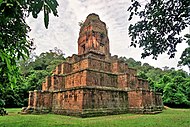









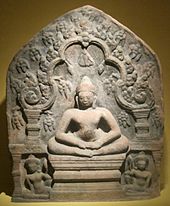

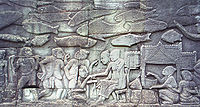
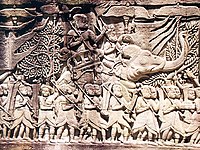

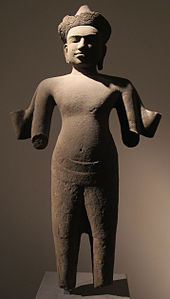
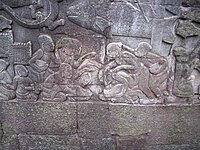
No comments:
Post a Comment